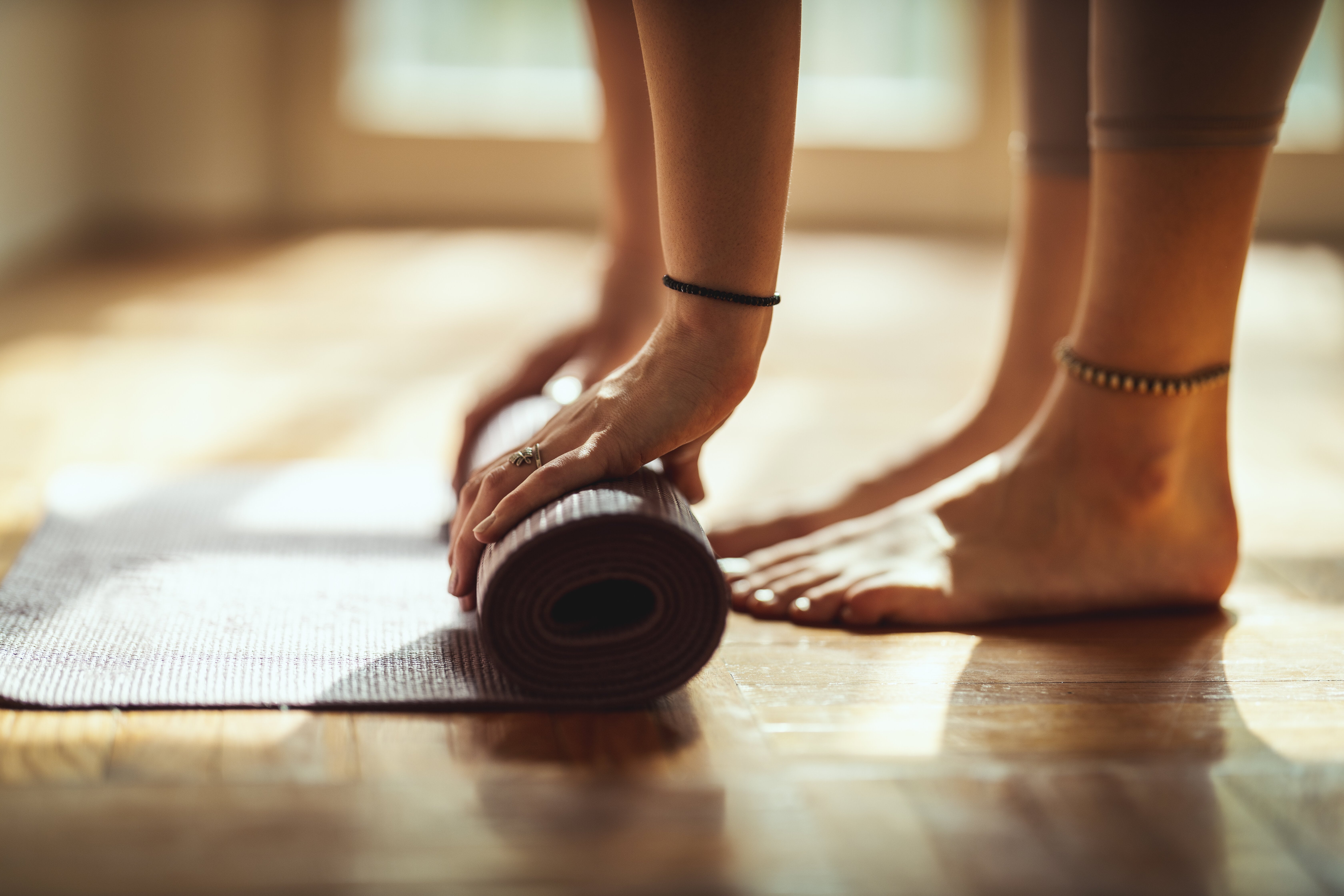Imagine a practice that not only contributes to your physical wellness but also enhances your mental peace and spiritual growth. That’s yoga for you – an ancient discipline that has withstood the test of time. Yoga, originating from India over 5,000 years ago, isn’t just about bending and twisting your body in complex ways. It’s a comprehensive regimen that integrates the body, mind, and soul, leading to a healthier, more balanced life. In this article, we explore five compelling reasons why incorporating yoga into your daily routine could be one of the best decisions you make for your overall well-being.
Yoga Improves Flexibility
Flexibility isn’t just about touching your toes or twisting into pretzel-like poses; it’s crucial for overall body health. Regular yoga practice gently stretches your muscles and increases the range of motion in your joints. Over time, those tight hamstrings, stiff backs, and locked-up shoulders begin to relax. Yoga poses like downward dog, pigeon pose, and the warrior series are excellent for enhancing flexibility in those areas that often tighten up from too much sitting. This increased suppleness not only aids in daily activities but also reduces the risk of injuries, making your body more resilient.
Yoga Relieves Stress
One of the most appreciated benefits of yoga is its ability to reduce stress. The practice emphasizes deep, mindful breathing and focuses on being present in the moment, which can be incredibly soothing for the mind. This shift from the fight-or-flight response to a relaxed state can significantly lower cortisol levels, the body’s stress hormone, promoting a sense of calm and well-being.
In fact, there is scientific evidence demonstrating how yoga can effectively reduce stress, anxiety, and even depression when done regularly.
Yoga Improves Strength
While yoga is most commonly associated with flexibility, it’s equally effective in building muscular strength. Poses like planks, chaturanga, and the chair pose require you to bear your body weight in different ways, which strengthens a variety of muscle groups. This strength building is more about creating muscle tone and endurance than bulking up. Regular practice leads to stronger muscles, which support better posture and help in everyday activities. This has been demonstrated in a research setting in several populations such as people with cancer, older adults, children, and healthy adults.
Yoga May Improve Sleep
A restful night’s sleep is essential for health, and yoga can be a powerful tool to improve your sleep quality. The meditative aspects of yoga, like deep breathing and mindfulness, promote relaxation, which can help in managing sleep disturbances. Practices like gentle yoga or Yoga Nidra before bedtime can be especially beneficial in calming the nervous system and preparing the body for sleep, and have been shown to improve how quickly people fall asleep and how deeply they asleep.
Yoga May Improve Bone Health
Emerging research suggests that yoga can also be beneficial for bone health. Weight-bearing poses, such as Downward-Facing Dog and Warrior Poses, can help in maintaining bone density, which is crucial in preventing conditions like osteoporosis. Moreover, the balance and strength gained from regular practice can reduce the risk of falls, particularly in older adults.
How to Get Started
Beginning a yoga practice is quite straightforward. You can join a local yoga studio, find online classes, or even start with free classes on Youtube. The key is to start with beginner-friendly classes that guide you through the basics. Investing in a good yoga mat can enhance your practice but is not required. I first started doing yoga on a regular basis during the pandemic in early 2020. I completed most of those early sessions on the rug in my living room.
Remember, yoga is about your personal journey, so listen to your body and progress at your own pace. Whether you’re looking to enhance your flexibility, reduce stress, build strength, improve sleep, or boost bone health, yoga offers a holistic solution. With its low barrier to entry and myriad of health benefits, there’s no better time than today to start your yoga journey.
References
- Amin DJ, Goodman M. The effects of selected asanas in Iyengar yoga on flexibility: pilot study. J Bodyw Mov Ther. 2014;18(3):399-404. doi:10.1016/j.jbmt.2013.11.008
- Polsgrove MJ, Eggleston BM, Lockyer RJ. Impact of 10-weeks of yoga practice on flexibility and balance of college athletes. Int J Yoga. 2016;9(1):27-34. doi:10.4103/0973-6131.171710
- Sivaramakrishnan D, Fitzsimons C, Kelly P, et al. The effects of yoga compared to active and inactive controls on physical function and health related quality of life in older adults- systematic review and meta-analysis of randomised controlled trials. Int J Behav Nutr Phys Act. 2019;16(1):33. Published 2019 Apr 5. doi:10.1186/s12966-019-0789-2
- Shohani M, Badfar G, Nasirkandy MP, et al. The Effect of Yoga on Stress, Anxiety, and Depression in Women. Int J Prev Med. 2018;9:21. Published 2018 Feb 21. doi:10.4103/ijpvm.IJPVM_242_16
- Sivaramakrishnan D, Fitzsimons C, Kelly P, et al. The effects of yoga compared to active and inactive controls on physical function and health related quality of life in older adults- systematic review and meta-analysis of randomised controlled trials. Int J Behav Nutr Phys Act. 2019;16(1):33. Published 2019 Apr 5. doi:10.1186/s12966-019-0789-2
- Vardar Yağlı N, Şener G, Arıkan H, et al. Do yoga and aerobic exercise training have impact on functional capacity, fatigue, peripheral muscle strength, and quality of life in breast cancer survivors?. Integr Cancer Ther. 2015;14(2):125-132. doi:10.1177/1534735414565699
- Folleto JC, Pereira KR, Valentini NC. The effects of yoga practice in school physical education on children’s motor abilities and social behavior. Int J Yoga. 2016;9(2):156-162. doi:10.4103/0973-6131.183717
- Halder K, Chatterjee A, Pal R, Tomer OS, Saha M. Age related differences of selected Hatha yoga practices on anthropometric characteristics, muscular strength and flexibility of healthy individuals. Int J Yoga. 2015;8(1):37-46. doi:10.4103/0973-6131.146057
- Dolezal BA, Neufeld EV, Boland DM, Martin JL, Cooper CB. Interrelationship between Sleep and Exercise: A Systematic Review [published correction appears in Adv Prev Med. 2017;2017:5979510]. Adv Prev Med. 2017;2017:1364387. doi:10.1155/2017/1364387
- Wang WL, Chen KH, Pan YC, Yang SN, Chan YY. The effect of yoga on sleep quality and insomnia in women with sleep problems: a systematic review and meta-analysis. BMC Psychiatry. 2020;20(1):195. Published 2020 May 1. doi:10.1186/s12888-020-02566-4
- Pandi-Perumal SR, Spence DW, Srivastava N, et al. The Origin and Clinical Relevance of Yoga Nidra. Sleep Vigil. 2022;6(1):61-84. doi:10.1007/s41782-022-00202-7
- Florio C. Strength adaptations of the tibia bone for prescribed sets of isometric forces and joint angles. SIMULATION. 2018;94(5):375-399. doi:10.1177/0037549717715108
- Lu YH, Rosner B, Chang G, Fishman LM. Twelve-Minute Daily Yoga Regimen Reverses Osteoporotic Bone Loss. Top Geriatr Rehabil. 2016;32(2):81-87. doi:10.1097/TGR.0000000000000085












